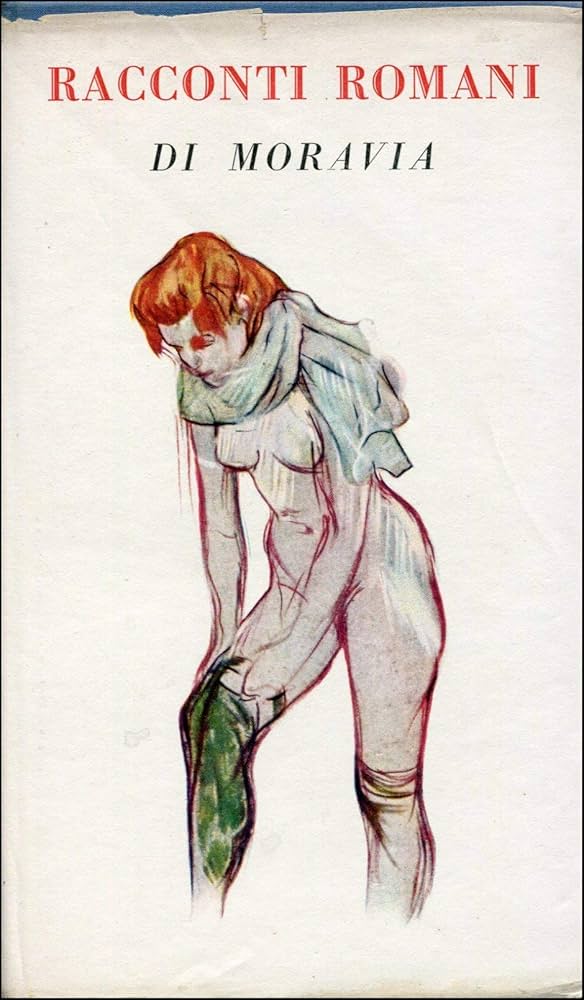
Title: Racconti romani
Writer: Alberto Moravia
Dados sobre a obra
- Classification: Contos
- Publication year: 1954
- Publisher: Bompiani, Milão, Itália
- Languages: Italiano
- Medium: Impresso
- Edition: 1
- ISBN: Obra anterior à instituição do ISBN
- Number of pages: 210
- Dimension: 14x21 cm
Description
Sumário da obra:
Fanatico; Arrivederci; Pioggia di maggio; Non approfondire; La bella serata; Scherzi del caldo; La controfigura; Il pagliaccio; Il biglietto falso; Il camionista; Il pensatore; Scorfani; Il mediatore; Il pupo; Il delitto perfetto; Il picche nicche; La voglia di vino; Prepotente per forza; Sciupone; La giornata nera; I gioielli; Tabù; Io non dico di no; L'incosciente; Il provino; Pignolo; La ciociara; Impataccato; Scherzi di Ferragosto; Il terrore di Roma; L'amicizia; La rovina dell'umanità; Perdipiede; Vecchio stupido; Caterina; La parola mamma; Gli occhiali; Il cane cinese; Mario; Gli amici senza soldi; Bu bu bu; Ladri in chiesa; Precisamente a te; Faccia da mascalzone; Un uomo sfortunato; Tirato a sorte; Pigliati un brodo; La vita di campagna; Le sue giornate; La gita; La rivincita di Tarzan; Romolo e Remo; Faccia da norcino; L'appetito; L'infermiera; Il tesoro; La concorrenza; Bassetto; Il guardiano; Il naso; Il godipoco.
Reference
MORAVIA, Alberto. Racconti romani. 1. ed. Milão, Itália: Bompiani, 1954.
| Title | Type | Translator(s) | Year |
|---|
Comments
